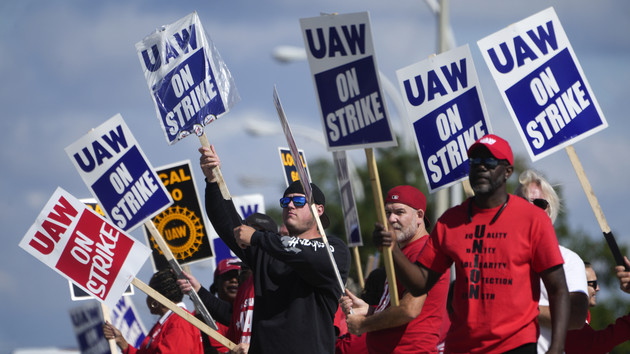
UAW launches historic strike against Big Three automakers
The Washington Post Sept 15, 2023
Some 2,600 nonstriking General Motors and Ford workers in Kansas and Michigan face temporary unemployment due to fallout from striking plants
United Auto Workers are on strike against the BIG 3 US Automotive companies, certainly news worthy but it is an interesting contrast to the long history of UAW strikes against US automotive companies. Here is an NYT article that chronicles that history. My interest comes from a career with Ford Motor Company, which began as an hourly UAW represented employee and later included several years as management in labor relations. I still have my honorable withdrawal card from the UAW when I became a salaried employee; assurance that I could return to my hourly job should I fail.
My first strike experience was as a production foreman in 1967:
..the United Auto Workers (UAW) union called a company-wide strike on Sept. 6, 1967, when the current UAW-Ford contract expired, which temporarily put a halt to auto/truck production nationwide. 150,000-160,000 Ford workers represented by the UAW went on strike, which continued until Oct 22, 1967. It was said that Ford lost more than 600,00 vehicles in all divisions due to the strike.
Ironically, for salaried production employees, those 46 days were a respite from the constant rigors of production. Unlike striking union workers , we continued to get paid while performing mostly busy work. Any utilization of salaried employees to perform union worker’s tasks became an issue impeding any settlement agreement. US automotive companies have had a long standing adversarial relationship with the UAW. Strikes provide a public stage to demonstrate latent anger and dissatisfaction, violence was no stranger.
Salaried employees, supporting of the company were placed in the uncomfortable position of discreetly cheering for the union’s success, particularly in regard to wages and benefits. Whatever the union achieved typically became the benchmark for increases in salary and benefits of salaried employees. We were as anxious to hear details of settlement agreements as were union employees.
The current strike is a departure from the union UAW’s usual strategy of pattern bargaining. In pattern bargaining, the union would target one big 3 auto company to strike. Whatever agreements made with the target company became the pattern for settlement with the other two companies. This produced some historic agreements and created considerable difficulties for big 3 automotive companies, Ford Motor Company, General Motors Corporation and Chrysler Corporation.
BIG 3 US Automakers are now GM, Ford and Stellantis. The worldwide automobile manufacturing landscape has changed dramatically since 1976 https://chat.openai.com/share/dde9f55d-fa62-48d4-a1c6-b1cb6491b795 .
Union membership in the US has declined significantly.

The current strike is certainly newsworthy but it falls far short of historic proportions . The headline focuses on 2,600 idled non-striking employees and does not mention 26,000+ striking employees walking picket lines.
This post intends to illustrate the character of many news reports today; headlines providing convenient facts without relevant context in order to shape public opinion. As is usually the case, there is a lot more to the story.
Always look behind the headlines.
STILL ON THE JOURNEY


